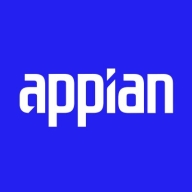

Appian and CA Process Automation are competing products in the field of process automation. Appian seems to have the upper hand due to its advanced features and flexibility, which appeals to enterprises seeking customization, whereas CA Process Automation stands out for its competitive pricing and strong support, making it ideal for budget-conscious buyers.
Features: Appian offers high-level customization and integration capabilities, advanced process modeling tools, and strong integration with third-party systems. CA Process Automation is noted for its reliability, seamless automation workflows, and a robust feature set suitable for enterprise-grade needs.
Room for Improvement: Appian could improve by shortening its learning curve, enhancing ease of deployment, and reducing implementation timelines. CA Process Automation may benefit from expanding its customization options, improving feature richness, and integrating more advanced process modeling tools.
Ease of Deployment and Customer Service: CA Process Automation provides a structured deployment model with comprehensive support, ensuring efficient rollouts and minimal disruption. Appian's deployment framework is customizable but may involve a steeper learning curve, necessitating additional planning and training resources.
Pricing and ROI: Appian's setup costs are higher but can be justified by its potential for significant ROI due to scalability and feature richness. CA Process Automation's competitive initial pricing is appealing for organizations prioritizing cost-effectiveness while offering satisfactory functionality.

Appian is a unified low-code platform and solution used by businesses to build enterprise applications and workflows. This product adapts to the needs of clients and the technologies they are already using to combine their data in a single workflow and maximize resources. The platform has four main components through which it transforms the work process for companies of various sizes. They are:
Appian is utilized across a diverse set of industries, including automotive and manufacturing, energy and utilities, education, financial services, telecom and media, transportation, retail, insurance, healthcare, and life sciences. The most frequent use cases of Appian are customer journey, governance, risk and compliance, operational efficiency, supply chain, distributed order management, and environmental, social, and governance (ESG) management.
Appian Features
Appian has various features that allow users to create solutions for their businesses. These features can be separated into a few groups according to function, including automation, low-code application development, and integrations and data. Some of the most frequently used features of Appian include:
Appian Benefits
The benefits of using Appian include:
Reviews from Real Users
A practice leader - digital process automation at a computer software company values Appian highly because the product is easy to develop, low-code, and has a good user interface.
Alan G., an advisory board member at Codecon VR, Appian offers a clear application life cycle, easy to learn documentation, and comes with a fundamentals course.
We monitor all Process Automation reviews to prevent fraudulent reviews and keep review quality high. We do not post reviews by company employees or direct competitors. We validate each review for authenticity via cross-reference with LinkedIn, and personal follow-up with the reviewer when necessary.